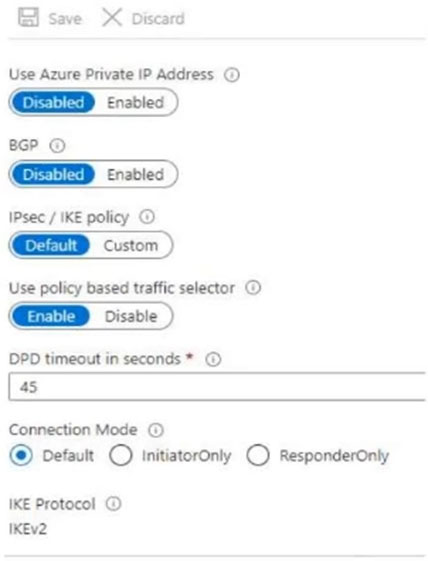

You have an Azure virtual network named Vnet1 and an on-premises network. The on-premises network has policy-based VPN devices.
In Vnet1, you deploy a virtual network gateway named GW1 that uses a SKU of VpnGw1 and is route-based.
You have a Site-to-Site VPN connection for GW1 as shown in the following exhibit.
You need to ensure that the on-premises network can connect to the route-based GW1.
What should you do before you create the connection?
RageshBethapudi
Highly Voted 2 years, 11 months agojilguens
Highly Voted 2 years, 11 months ago620b351
Most Recent 10 months, 3 weeks agovDreams
1 year, 11 months agokhanda
2 years, 4 months agoChezzer83
2 years, 4 months agowhere2go
2 years, 4 months agobennasu
2 years, 5 months agoBbb78
2 years, 6 months agosserna
2 years, 6 months agomm2
2 years, 7 months agomm2
2 years, 7 months agozukako
2 years, 7 months agoAndre369
2 years, 8 months agoJRodJ
2 years, 8 months agoLibaax01
2 years, 9 months agoPrutser2
2 years, 10 months ago